How Barbara Landsberg made her Withycombe dream come true
The story of how this historic Blue Mountains property and its garden designer owner Barbara Landsberg came together is a tale of unbelievable serendipity and big dreams.
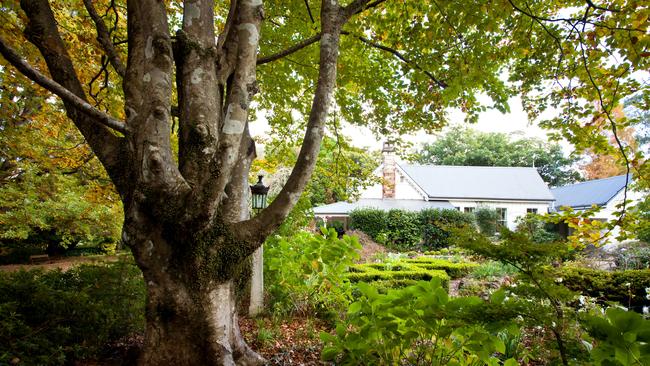
The story of how Withycombe and garden designer Barbara Landsberg came together is a tale of serendipity, big dreams and love. One of the historic properties of the Blue Mountains west of Sydney, set on 3.2ha with an 1880s home, Withycombe has had many owners. Landsberg and her husband Merrick Howes have owned it for 24 years (longer than anyone else) and they hope it will be their family’s heart for generations to come.
Landsberg first saw her “fairytale” place 35 years ago when visiting a friend’s cousin who ran Withycombe as a guest house. “I was in my early twenties and it was one of the most beautiful places I’d ever seen,” she says.
Landsberg became friends with those owners, later taking her husband-to-be there, and then honeymooning there. It held a special place in their hearts and was frequently the venue for extended family celebrations.
In 2001 the couple were living in England with two small children when the chance to buy Withycombe arose. “It was mad, but the dream was too important – we had to find a way to make it work,” says Landsberg. And with the loyal support of her family members, they did. “Withycombe found us,” she explains. “We didn’t go looking for it or plan for it. It just happened.”
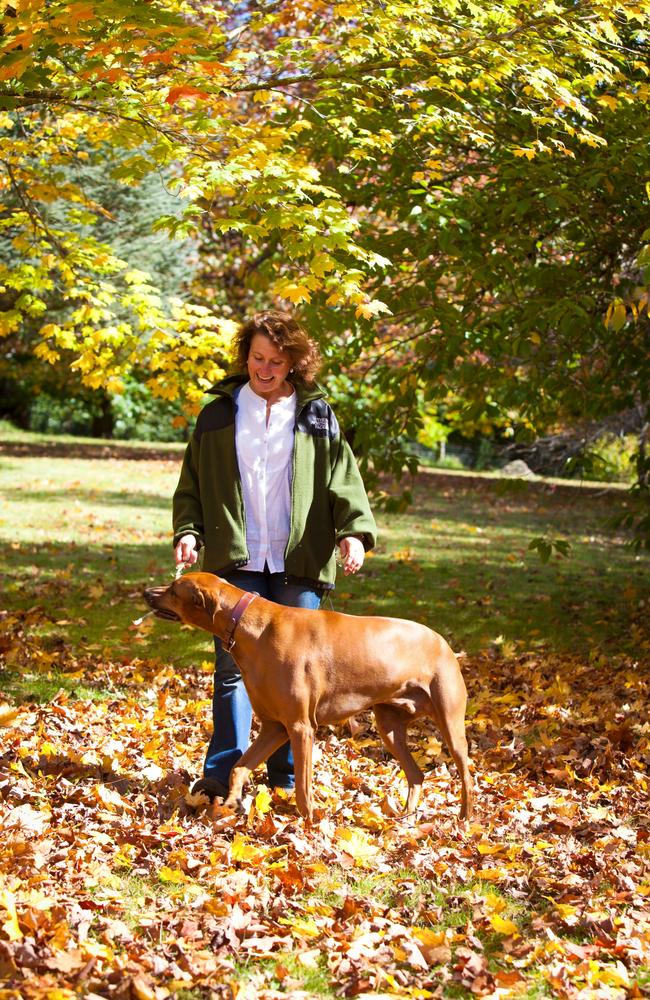
While the house was in good shape, the garden wasn’t. It was full of extraordinary trees like the immense Spanish oak (Quercus x hispanica) in front of the house, but successive owners had left an eclectic legacy and it was completely overgrown. Her recently retired parents moved to Withycombe and got stuck in, removing dead trees, taming thickets and uncovering its bones. Landsberg drew up a master plan during the garden design diploma she was – serendipitously – completing in London. “I found out at 36 what I wanted to do when I grew up,” laughs Landsberg, who has run her award-winning garden design business in Sydney since 2006.
The 70-plus tree species identified in the garden include stately blue spruce (Cedrus deodara), swamp cypresses, Magnolia grandiflora and remnant eucalypts.
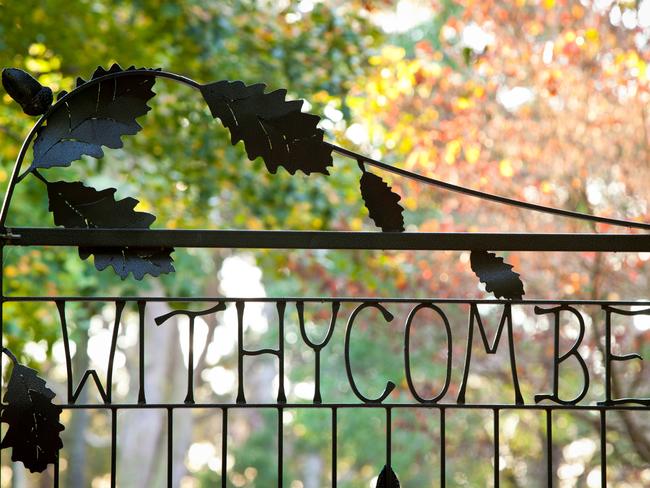
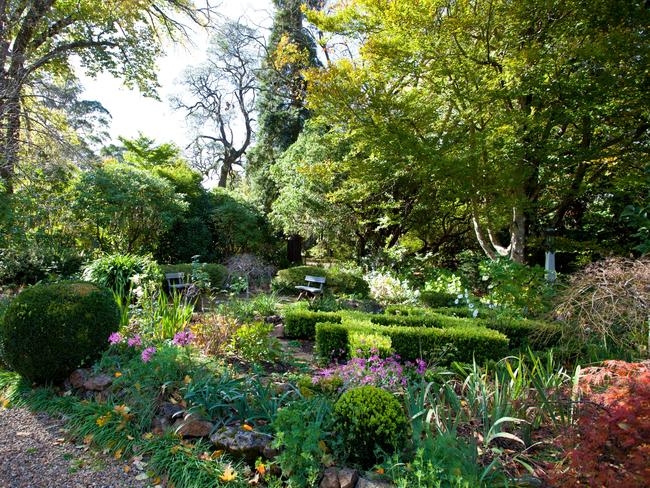
“The Japanese maples in autumn are radiant,” says Landsberg.
With a view to succession as some trees reach senescence, they’ve added copper beech, dogwoods, birch, more maples and a handkerchief tree (Davidia), as well as more of the local tree ferns (Cyathea australis). Landsberg has planted thousands of bulbs to add colour to the camellias, rhododendrons and azaleas that thrive in the rich volcanic soil.
“There are many parts of the garden that are very old, which we’ve restored, and we’ve added new areas that we’ve tried to bring in sensitively,” says Landsberg. These include an extensive orchard, vegetable and rose gardens and a replacement tennis court.

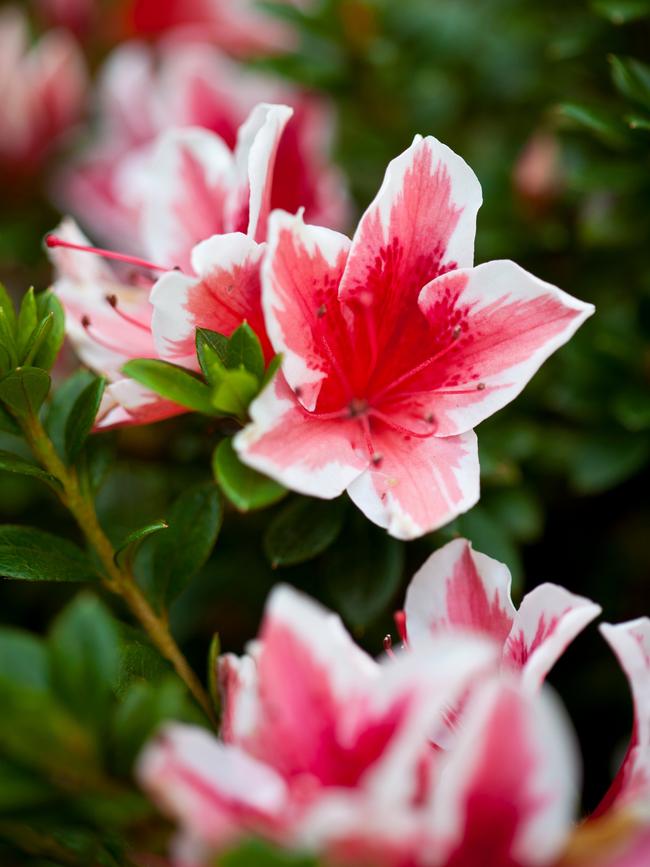
What was an uncomfortable, sloping paddock has been transformed into an amphitheatre of gently formed grass benches, each wide enough for a picnic blanket.
The family are hands-on gardeners. “It’s a lot of work – you have to love it. Merrick is the compost king,” says Landsberg of her husband, who is otherwise a fund manager. “It’s a family garden where every place is used, for picnicking, playing, resting and exploring. Our gift to Withycombe will be the revitalisation of the garden. It has a great heart and energy – that’s what we fell in love with.”
Q&A
Our Buxus hedge keeps dying in parts, which googling advises is buxus blight. Is there any solution apart from removing the dead bits?
Josephine Shroot, by email
Fortunately, Australia does not have box blight, the dreaded fungal disease that kills box (Buxus) plants across Europe and in New Zealand. However, a fungal dieback does affect box plants here, especially if your soil stays wet or mulch has built up around the stems. Check drainage is good and reduce watering. Increase beneficial soil microbes – Seasol, Gogo Juice, Popul8 and your own compost are all good. Cut out and destroy the affected parts; plants can recover.
What can we plant between the south-facing buttresses and under the windows of our converted church? We’d love some colour but it doesn’t get much sun and is a bit windy.
Soula Mantalvanos, Queenscliff, Victoria
Most flowering plants need some sun. Limited options include clivias, cane begonias, renga lily (Arthropodium), Brazilian plume (Justicia carnea), hydrangeas, Pieris, and smaller Camellia japonica varieties such as ‘Man Size’, ‘Lemon Drop’, ‘Buttons and Bows’ and ‘Black Tie’. Plectranthus argentatus has bright silver leaves to add shimmer.
My sasanqua camellias are several years old and flowering well but the foliage is quite sparse. How can I improve them?
Gabrielle Smith, Sydney
Pruning makes plants bushier because it forces single stems to produce multiple shoots. Lanky plants can be pruned hard – prune below where you want the new growth to start. Then frequent, light tip pruning will maintain a bushy shape. For sasanquas, prune after flowering finishes or at least by early spring, especially if pruning hard. Tip prune through to the end of the year, when sasanquas start to form their flower buds for autumn. Apply a camellia fertiliser in spring and autumn and keep plants mulched.
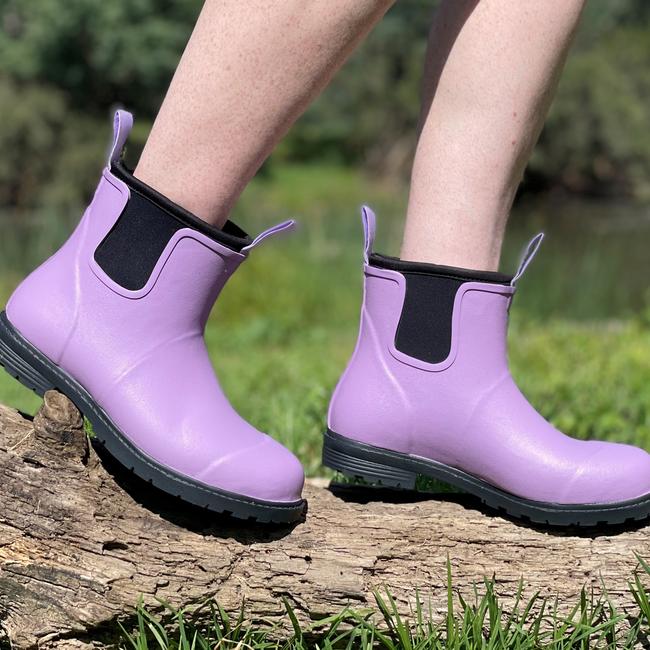
Send your questions to: helenyoungtwig@gmail.com. The best question for June will win a pair of Sloggers Outnabout boots of your colour choice, worth $140. May’s winner is Dave de Jonge for his question about potting mix slumping.



To join the conversation, please log in. Don't have an account? Register
Join the conversation, you are commenting as Logout